Abstract
A mutant strain of Chlamydomonas reinhardi, ac-206, lacks cytochrome 553, at least in an active and detectable form. Chloroplast fragments of this mutant strain are inactive in the photoreduction of NADP when the source of electrons is water, but they are active when the electron source is 2,6-dichlorophenolindophenol and ascorbate. The addition of either cytochrome 553 or plastocyanin, obtained from the wild-type strain, has no effect upon the photosynthetic activities of the mutant strain. Cells of the mutant strain lack both the soluble and insoluble forms of cytochrome 553, but they possess the mitochondrial type cytochrome c. Thus, the loss of cytochrome 553 appears to be specific.
Another mutant strain, ac-208, lacks plastocyanin, or possesses it in an inactive and undetectable form. Chloroplast fragments of ac-208 are inactive in the photoreduction of NADP with either water or 2,6-dichlorophenolindophenol and ascorbate as electron donors. However, these reactions are restored upon the addition of plastocyanin. The addition of cytochrome 553 has no effect. The measurement of light-induced absorbance changes with ac-208 reveal that, in the absence of plastocyanin, light fails to sensitize the oxidation of cytochrome 553, but it will sensitize its reduction. However, the addition of plastocyanin restores the light-induced cytochrome oxidation.
A third mutant strain, ac-208 (sup.) carries a suppressor mutation that partially restores the wild phenotype. This mutant strain appears to possess a plastocyanin that is less stable than that of the wild-type strain.
The observations with the mutant strains are discussed in terms of the sequence of electron transport System II → cytochrome 553 → plastocyanin → System I.
Full text
PDF
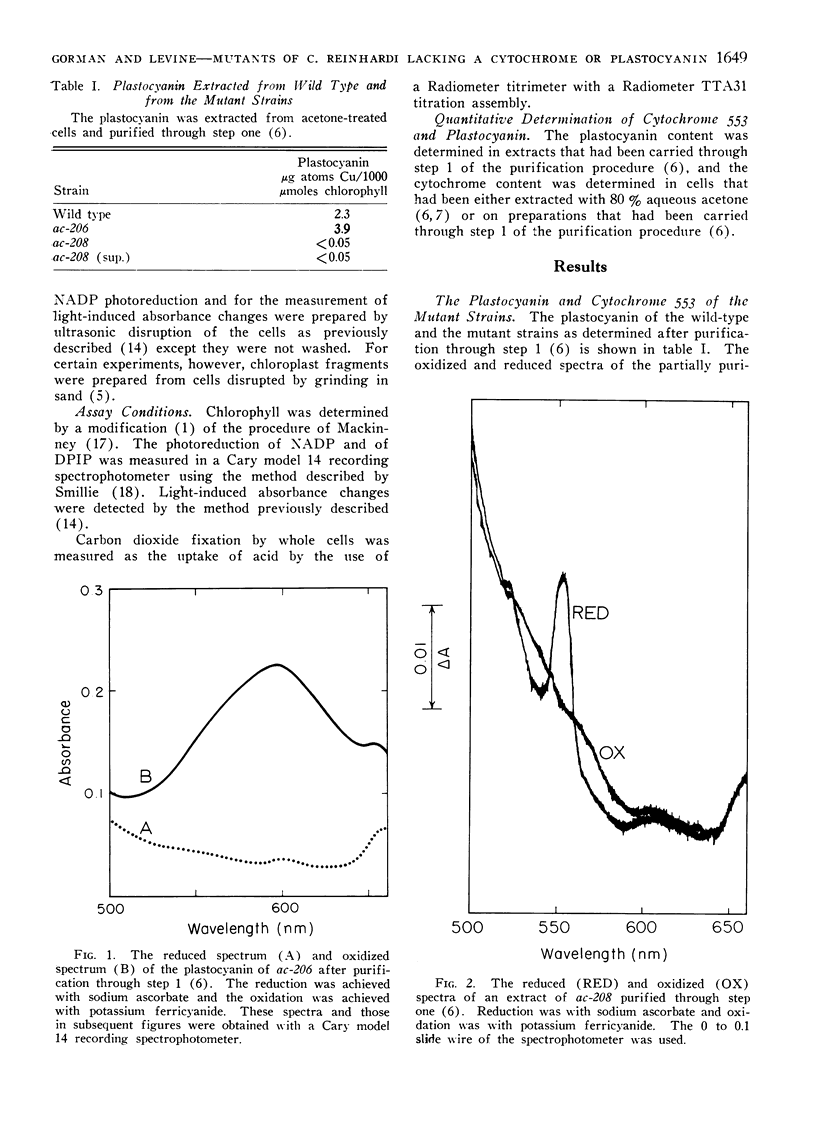
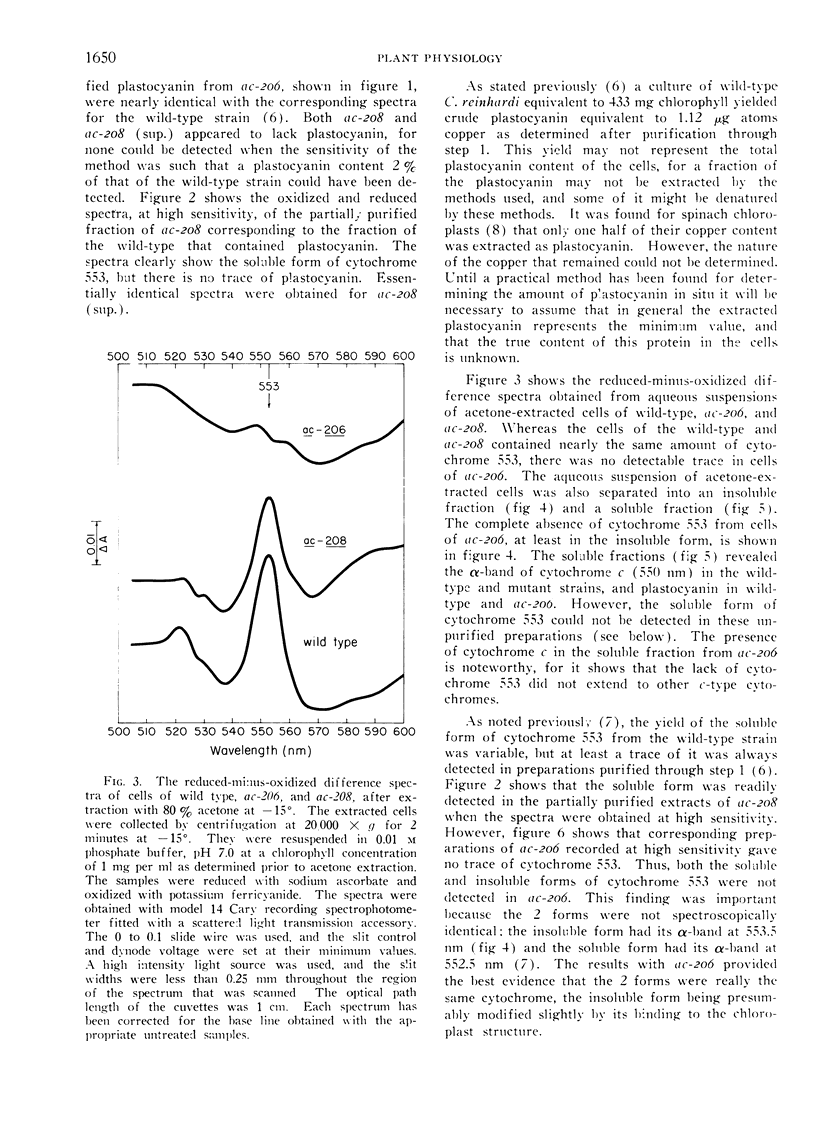
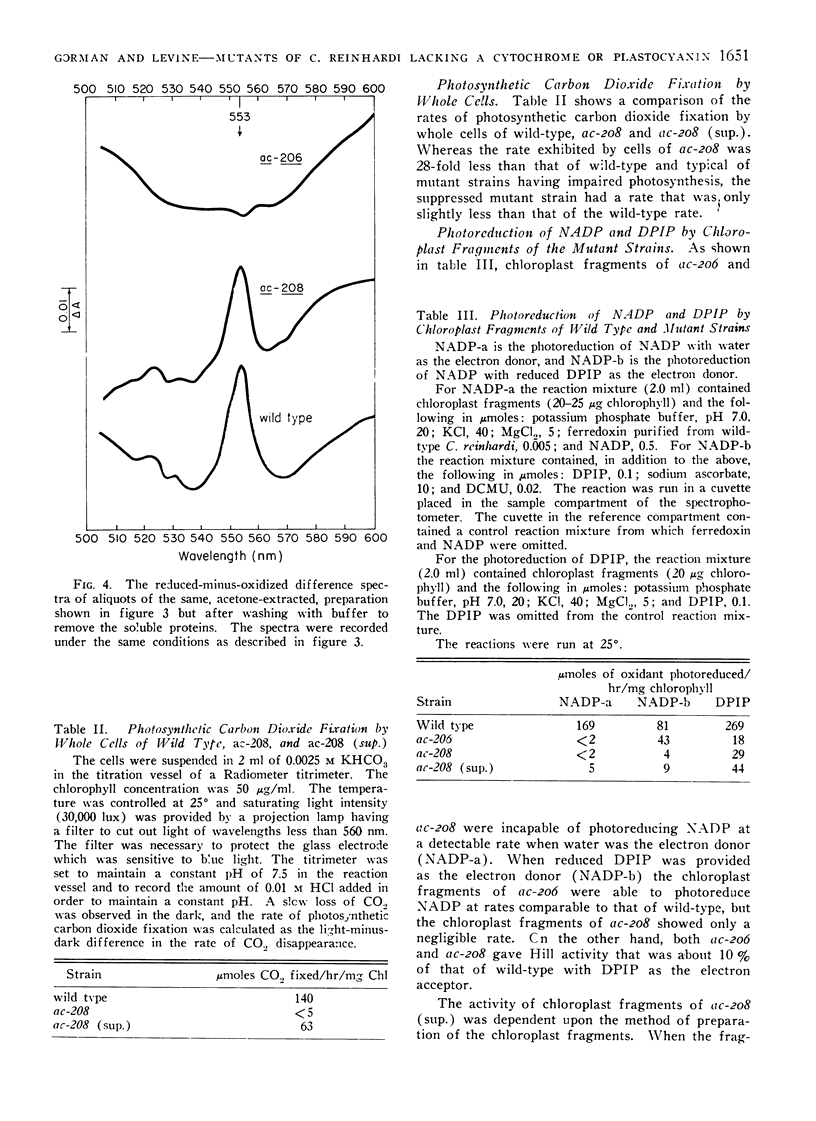
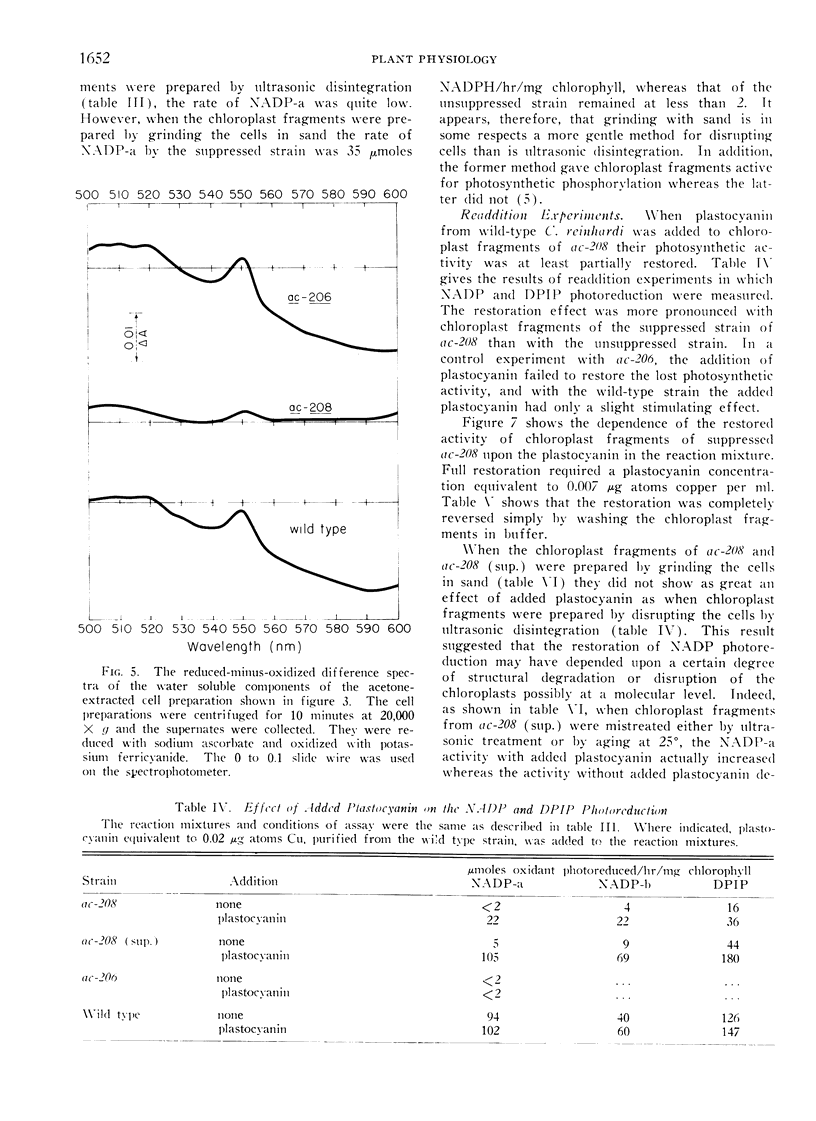
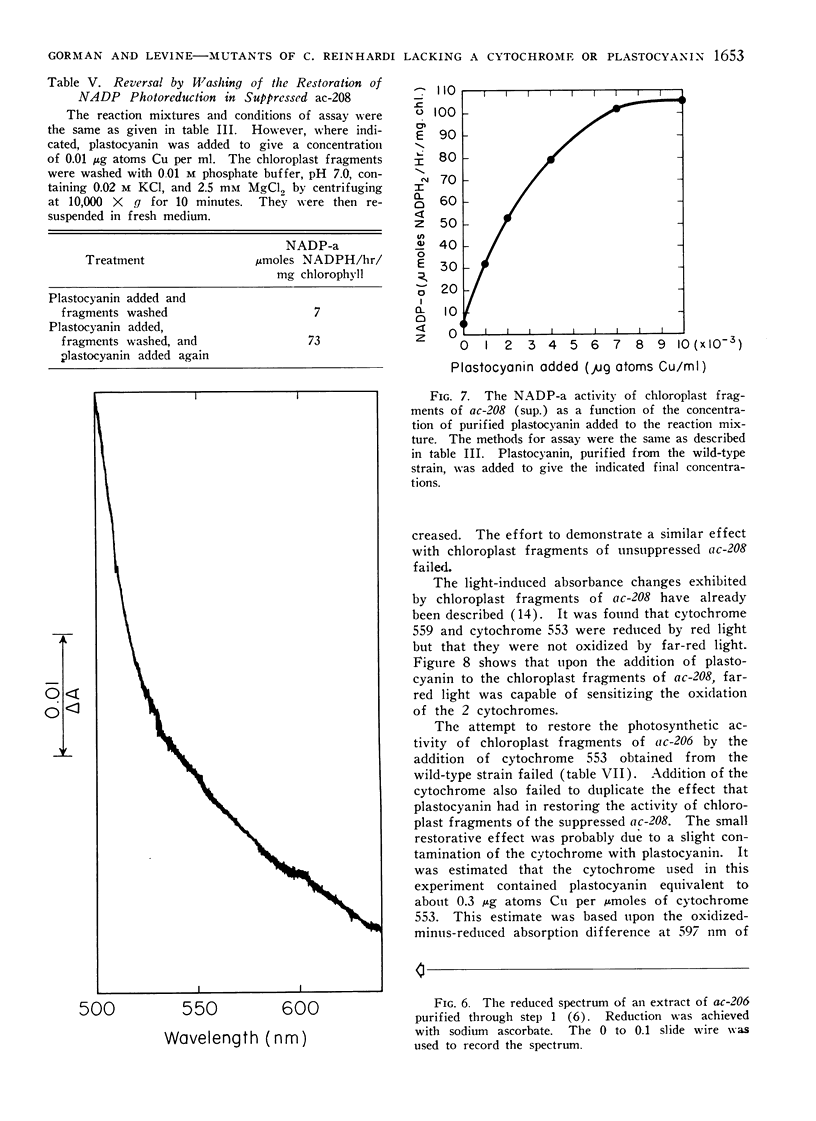
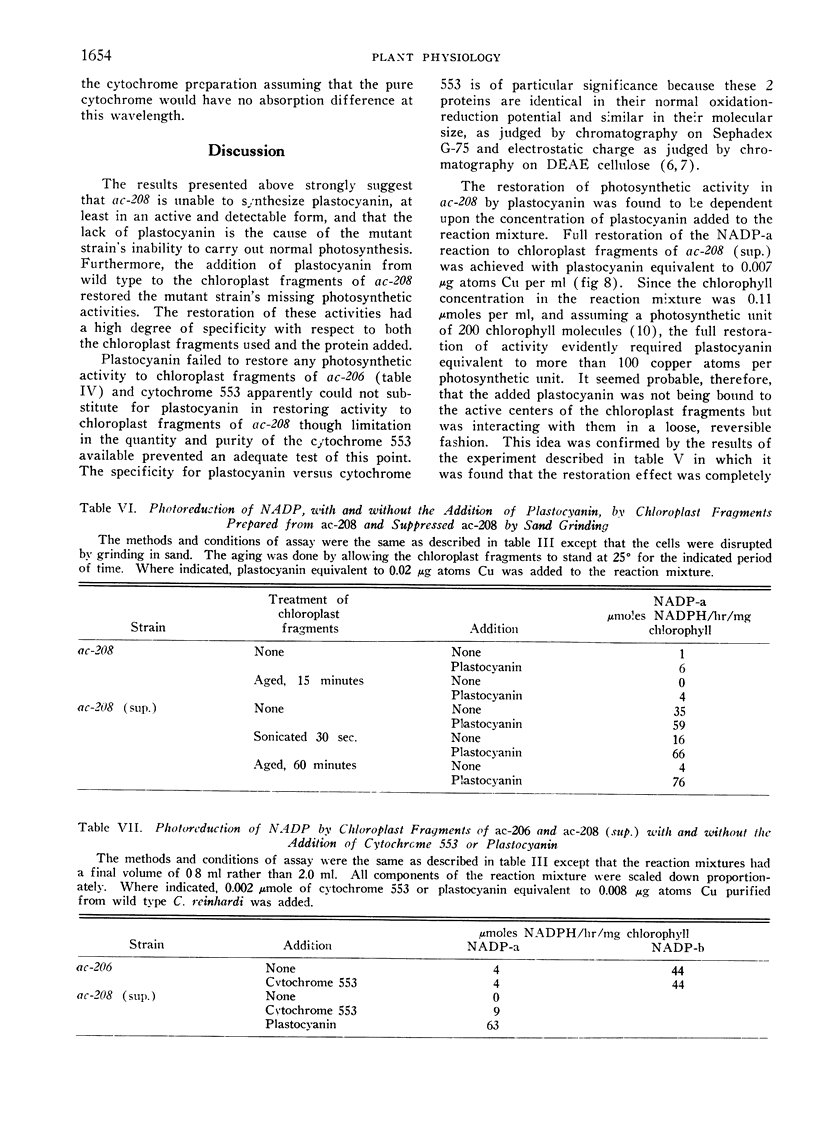

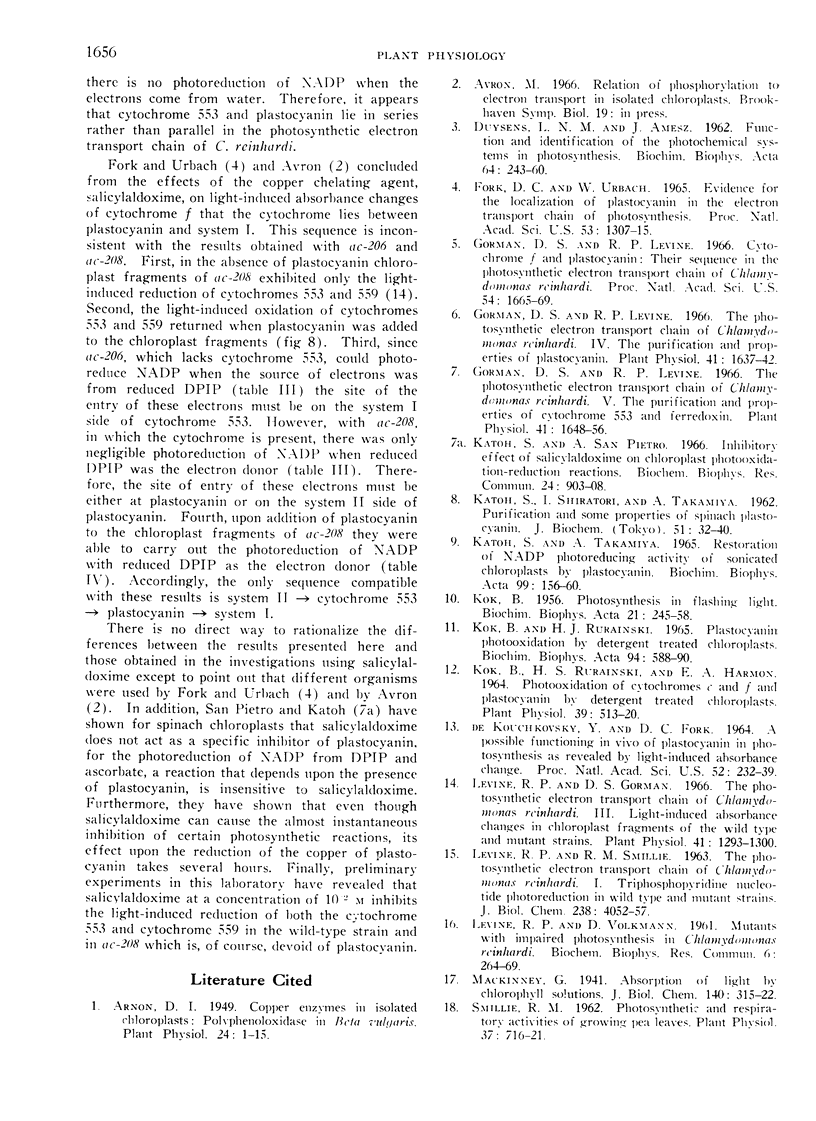
Selected References
These references are in PubMed. This may not be the complete list of references from this article.
- Fork D. C., Urbach W. EVIDENCE FOR THE LOCALIZATION OF PLASTOCYANIN IN THE ELECTRON-TRANSPORT CHAIN OF PHOTOSYNTHESIS. Proc Natl Acad Sci U S A. 1965 Jun;53(6):1307–1315. doi: 10.1073/pnas.53.6.1307. [DOI] [PMC free article] [PubMed] [Google Scholar]
- Gorman D. S., Levine R. P. Photosynthetic Electron Transport Chain of Chlamydomonas reinhardi. IV. Purification and Properties of Plastocyanin. Plant Physiol. 1966 Dec;41(10):1637–1642. doi: 10.1104/pp.41.10.1637. [DOI] [PMC free article] [PubMed] [Google Scholar]
- KOK B. Photosynthesis in flashing light. Biochim Biophys Acta. 1956 Aug;21(2):245–258. doi: 10.1016/0006-3002(56)90004-x. [DOI] [PubMed] [Google Scholar]
- KOK B., RURAINSKI H. J. PLASTOCYANIN PHOTO-OXIDATION BY DETERGENT-TREATED CHLOROPLASTS. Biochim Biophys Acta. 1965 Mar 29;94:588–590. doi: 10.1016/0926-6585(65)90072-5. [DOI] [PubMed] [Google Scholar]
- Levine R. P., Gorman D. S. Photosynthetic electron transport chain of Chlamydomonas reinhardi. 3. Light-induced absorbance changes in chloroplast fragments of the wild type and mutant strains. Plant Physiol. 1966 Oct;41(8):1293–1300. doi: 10.1104/pp.41.8.1293. [DOI] [PMC free article] [PubMed] [Google Scholar]
- de Kouchkovsky Y., Fork D. C. A POSSIBLE FUNCTIONING IN VIVO OF PLASTOCYANIN IN PHOTOSYNTHESIS AS REVEALED BY A LIGHT-INDUCED ABSORBANCE CHANGE. Proc Natl Acad Sci U S A. 1964 Aug;52(2):232–239. doi: 10.1073/pnas.52.2.232. [DOI] [PMC free article] [PubMed] [Google Scholar]


